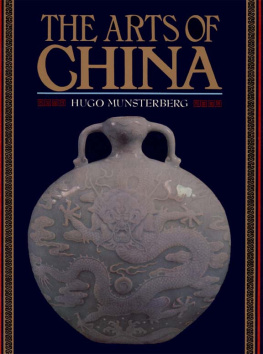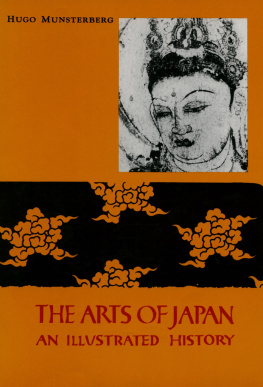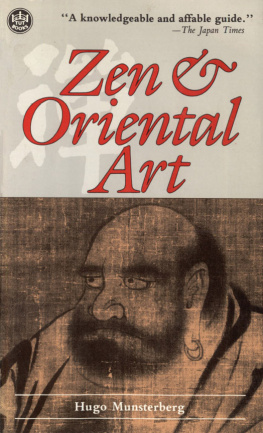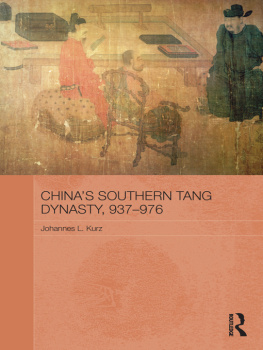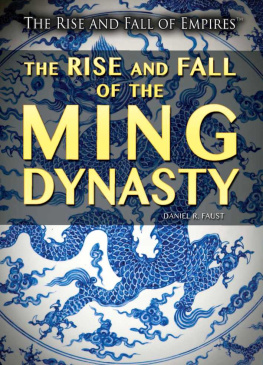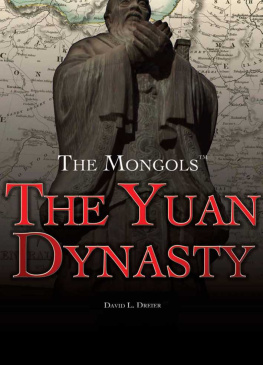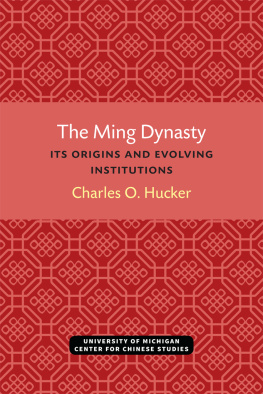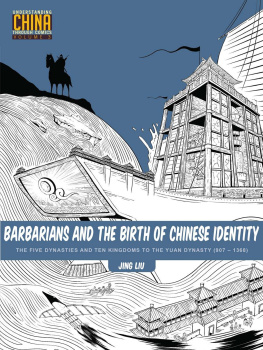I wish to express my gratitude to colleagues of both the East and the West whose research and writings, both supplementing and complementing my own study, have made this book possible. Some are mentioned in the text and some are listed in the bibliography. Still others remain unmentioned, but to each and all I extend my thanks.
I am also grateful to those who furnished the photographs which contribute so much to this book. Especial thanks are due to Mr. Earl Morse of New York, who provided most of the color plates and a goodly number of monochromes, to Mr. and Mrs. Myron Falk, also of New York, who kindly permitted photographic reproductions of Chinese ceramics in their private collection, and to Dr. Paul Singer, of Summit, New Jersey, who graciously supplied me with photographs of objects in his collection.
Bibliography
GENERAL BOOKS ON CHINESE ART
Bachhofer, L.: A Short History of Chinese Art, New York, 1946
Burling, J. and A. :Chinese Art, London, 1954
Carter, D. :Four Thousand Years of Chinese Art, New York, 1948
Fry, R., editor:Chinese Art, London, 1925
Grousset, R. :Chinese Art and Culture, New York, 1959
Lion-Goldschmidt, D., Jenyns, S., Watson, W. et al.:Chinese Art, London, 1960-65
Munsterberg, H. :A Short History of Chinese Art, New York, 1949
Sickman, L. and Soper, A. :The Art and Architecture of China, London, 1956
Sirn, O. :Kinas Konst Under Tre Artusenden, Stockholm, 1942
Speiser, W. :China,New York, 1960
Sullivan, M. :An Introduction to Chinese Art, Berkeley, 1961
Willetts, W.:Chinese Art, London, 1958
PREHISTORIC POTTERY
Andersson, J. G. :Children of the Yellow Earth, London, 1934
_____: "Researches into the Prehistory of the Chinese, "Bulletin of the Museum of Far Eastern Antiquities,vol. 15, Stockholm, 1943
Chng T-k'un:Archaeology iti China,vol. 1, Cambridge, 1959
Li Chi :The Beginnings of Chinese Civilization, Seattle, 1957
Wu, G. D.:Prehistoric Pottery in China, London, 1938
ANCIENT BRONZES AND JADES
Chng T-k'un:Archaeology in China,vols. 2 and 3, Cambridge, 1960, 1963
Hentze, C.:Frhchinesische Bromen und Kultdarstellungen, Antwerp, 1937
-: Frhchinesische Sakralbronzen und Ihre Bedeutung in den Frhchinesischen Kulturen, Antwerp, 1941
Karlgren, B. : "Huai and Han, "Bulletin of the Museum of Far Eastern Antiquities,vol. 13, Stockholm, 1941
_____: "New Studies in Chinese Bronzes, "Bulletin of the Museum of Far Eastern Antiquities,vol. 9, Stockholm, 1937
_____: "Yin and Chou in Chinese Bronzes, "Bulletin of the Museum of Far Eastern Antiquities,vol. 8, Stockholm, 1936
Laufer, .-.Jade, Chicago, 1912
Loehr, M. :Chinese Bronze Age Weapons, Ann Arbor, 1956
_____: Relics of Ancient China, New York, 1965
Mizuno, S. :Bronzes and Jades of Ancient China, Kyoto, 1959
Salmony, .:Archaic Chinese Jades,Chicago, 1952
Waterbury, F. :Early Chinese Symbols and Literature, New York, 1942
Watson, W. :Ancient Chinese Bronzes, Rutland, Vermont, 1962
PAINTING AND CALLIGRAPHY
Cahill, J.:Chinese Painting,New York, 1960
Chiang Yee:Chinese Calligraphy, London, 1938
Cohn, W. :Chinese Painting, London, 1957
Gray, B. and Vincent, J. B. :Buddhist Cave Paintings at Tun Huang, London, 1959 van Gulik, R. H.:Chinese Pictorial Art, Rome, 1958
Kuo Hsi:An Essay on Landscape Painting, London, 1936
Lee, S.:Chinese Landscape Painting, Cleveland, 1954
Munsterberg, H.:The Landscape Painting of China and Japan, Rutland, Vermont & Tokyo, Japan, 1955
Siren, O.:The Chinese on the Art of Painting,Peking, 1936
_____: Chinese Painting: Leading Masters and Principles, 7 vols., London, 1956-58
Sullivan, M. :Chinese Art in the Twentieth Century, London, 1959
Swann, P. :Chinese Painting, Paris, 1958
Waley, A. :An Introduction to Chinese Painting, London, 1923
SCULPTURE
Ashton, L. :Introduction to the Study of Chinese Sculpture, London, 1924
Chavannes, E.:Mission Archologique dans la Chine Septentrionale, Paris, 1909-15
Fischer, O. :Chinesische Plastik,Munich, 1948
Mizuno, S. :Chinese Stone Sculpture,Tokyo, 1950
_____: Yn Kang, 15 vols., Kyoto, 1952
Munsterberg. H. :The Art of the Chinese Sculptor, Rutland, Vermont & Tokyo, Japan, 1960
Siren, O.:Chinese Sculpture, 4 vols., London, 1925
Soper, A. :Literary Evidence for Early Buddhist Art in China, Ascona, 1959
ARCHITECTURE
Boerschmann, E. :Chinesische Architektur, Berlin, 1925
_____: Pagoden, Berlin, 1931
Boyd, .:Chinese Architecture, London, 1962
Prip-M0ller,J. :Chinese Buddhist Monasteries, Copenhagen, 1937
Sirn, O. :Chinese Architecture,vol. 4 inHistory of Chinese Art, London, 1929
_____: Gardens of China, New York, 1949
_____: Imperial Palaces of Peking, Paris, 1926
_____: Walls and Gates of Peking, London, 1924
CERAMICS
Garner, H. :Oriental Blue and White, London, 1954
Gompertz, G. St. G. M.:Chinese Celadon Wares, London, 1958
Gray, B.:Early Chinese Pottery and Porcelain, London, 1953
Hobson, R. L. :Chinese Pottery and Porcelain, London, 1915
_____: Chinese Pottery and Porcelain in the David Collection, London, 1934
_____: Later Ceramic Wares of China, London, 1925
_____: The Wares of the Ming Dynasty, London, 1923 (reissued, 1962)
Honey, W. B.:The Ceramic Art of China and Other Countries of the Far East,London, 1945
Jenyns, S.:Later Chinese Porcelain, London, 1959
_____: Ming Pottery and Porcelain, London, 1953
Pope, J..:Chinese Porcelains from the Ardebil Shrine, Washington, 1956
_____: Fourteenth Century Blue and White, Washington, 1953
CHAPTER ONE
The Art of PREHISTORIC CHINA
(c. 3000 B.C.-c. 1500 B.C.)
CHINA CAN look back upon the oldest continuous artistic tradition existing in the world today. Other civilizations predated the Chineseancient Mesopotamia, dynastic Egypt, Minoan Crete, Jomon Japan, and those of prehistoric Iran and the Indus valleybut only in China does a current civilization extend back in unbroken continuity for well over four thousand years. Both the people and the culture descend directly from a civilization which took form during the third millennium before Christ. Many characteristics of prehistoric Chinese art persist or recur throughout these centuries in a continuity found in no other great civilization of today.
Like the legends of all cultures, those of China describe the origin of the world. In one common version, P'an Ku created the world by separating heaven and earth. During the next 400,000 years, the Twelve Emperors of Heaven and the Eleven Emperors of Earth reigned over the world. The Nine Emperors of Mankind reigned during the next 45,000 years. Then a sequence of sixteen ralers was followed by the three Great Sovereigns: Fu Hsi, Shn Nung, and Huang Ti. These last are credited with inventing the arts and crafts and founding Chinese civilization. Shn Nung taught the people to till the soil. Huang Ti, known as the Yellow Emperor, founded the imperial house of China.

